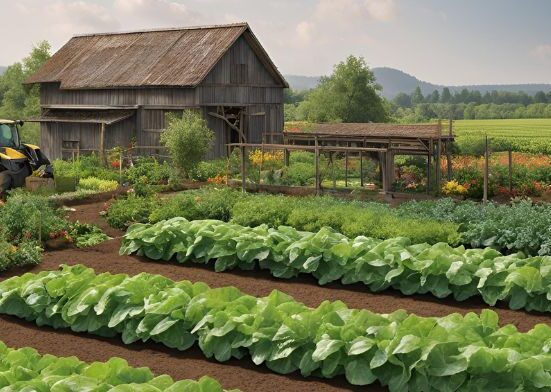Proper installation of building systems is essential to ensure reliable performance, but errors in fire Sprinkler System Design can have life-threatening consequences. New York City enforces some of the strictest fire protection codes in the world. Any mistakes in your sprinkler system will likely be flagged during inspections, preventing the building from operating until issues are resolved. Unfortunately, correcting these errors can be costly—making it crucial to avoid them from the outset. The most effective way to prevent installation mistakes involves experienced professionals from the design phase.
Additionally, consider hiring supervision services to verify that installations comply with approved design documents. Precision is even more critical for large buildings subject to Local Law 26, which requires fire sprinkler installations. With the compliance deadline of July 1, 2019, fast approaching, these projects leave little room for delays. This article will explore some of the most common sprinkler installation mistakes. Working with qualified professionals minimizes risks, and having extra technical knowledge can provide added peace of mind!
Theory and Best Practices for Irrigation Systems
irrigation system design operate like funnels—though describing them as reverse funnels is more accurate. At the widest point, you have your primary water supply connection. This typically comes from the municipal water system, although some properties may rely on a well or, in rare cases, pumps that draw water from a nearby river or lake. However, most homeowners connect directly to their city’s water line. From the water source, water flows into a valve box that houses a manifold and multiple valves. Depending on local regulations, The Complete Beginner’s Guide to Drip Irrigation your system may also need to include components like a backflow prevention device. In essence, water enters through the main line, passes through the manifold, and then moves through a valve into a specific watering zone.
Each zone contains several sprinkler heads, the number of which depends on your water flow capacity. These design sprinkler system are the visible mechanisms that spray water across your lawn. They come in different types, each designed for specific purposes—something we’ll cover later. When planning your irrigation system, there are many factors to consider, such as the number of zones, the types of sprinkler heads, and the watering methods you’ll use. However, the guiding question for all your decisions should be: “How can I effectively water my entire yard while using the least amount of water?”Focusing on efficiency and conservation saves water and helps your system pay for itself over time. Prioritising innovative watering practices can achieve effective coverage and cost savings.
Neglecting Water Pressure Calculations
One of the most common mistakes in irrigation design is neglecting to correctly calculate water pressure. While it might seem like a small detail, water pressure is the backbone of an efficient and effective sprinkler system. Let’s explain why this matters and how to avoid falling into this trap.
Why Accurate Water Pressure Matters

Water pressure determines how well your flower bed sprinkler placement diagram can distribute water across your yard or garden. If it is too high, you risk damaging the sprinkler heads or wasting water through misting. Too low, Saltwater Farming the water won’t reach all areas evenly, leading to dry patches and uneven watering. Think of water pressure as the heart pumping blood through your body—if it’s not working correctly, nothing else functions as it should.
Effects of High Water Pressure
High water pressure might sound like a good thing, but it can create more problems than it solves:
- Damage to Equipment: Excessive pressure can prematurely wear out valves, pipes, and sprinkler heads.
- Misting: Water sprayed at high pressure often turns into mist, leading to water loss through evaporation.
- Inconsistent Coverage: High-pressure systems may cause water to overshoot certain areas, creating uneven watering patterns.
Effects of Low Water Pressure
On the other hand, insufficient water pressure can result in:
- Dry Spots: Sprinkler heads won’t spray far enough, leaving some areas unwatered.
- System Inefficiency: The sprinkler system works harder but delivers less water, wasting energy and time.
- Underperformance: Plants and lawns may not get enough water to thrive, leading to poor growth or damage.
How to Calculate Water Pressure
To avoid these issues, calculating water pressure accurately is essential. Here’s how:
- Measure Static Water Pressure: Use a pressure gauge to measure the pressure directly from your outdoor faucet. This gives you a baseline.
- Consider Pressure Loss: Consider factors that reduce pressure, such as long pipe runs, elevation changes, or multiple zones running simultaneously.
- Check Sprinkler Requirements: Each sprinkler head has a recommended pressure range. Ensure your irrigation layout is designed to match these requirements.
- Use a Pressure Regulator: If your pressure is too high, install a regulator to reach the optimal level.
Failing to Plan for Maintenance Access
One often overlooked mistake in designing a sprinkler system is failing to plan for maintenance access. While the system may work perfectly after installation, regular upkeep is inevitable, and poorly placed components can make repairs or adjustments a nightmare.Minor fixes can become significant when sprinkler heads, valves, or pipes are buried deep, hidden under landscaping, or placed in hard-to-reach areas. For instance, replacing a broken sprinkler head might require digging up flower beds or removing pavers if access wasn’t considered during the design phase. This wastes time and effort and can damage your carefully planned landscaping.

To avoid this, prioritize accessibility during the design process. Position key components, like valves and control boxes, in areas that are easy to locate and reach. Use valve boxes or covers to protect underground components while keeping them accessible. Additionally, ensure that sprinkler heads are installed at the right height and away from obstructions like shrubs or walls.A well-maintained system is crucial for efficient watering and long-term performance. By planning for maintenance access from the start, you save time, reduce frustration, drip irrigation and ensure your sprinkler system remains hassle-free for years. A little foresight now can save you a lot of headaches later.
Incorrect Zone Mapping
Incorrect zone mapping is a common yet critical mistake in sprinkler system design that can lead to inefficient watering, wasted resources, and unhealthy landscapes. Zone mapping involves dividing your yard into sections, or “zones,” based on plants’ water needs, soil types, and environmental conditions. When this process is done poorly, the system fails to deliver water where and when needed most.For example, grouping sun-drenched lawns with shaded flower beds in the same zone often results in overwatering shaded areas while sunny spots remain dry. Similarly, mixing drought-tolerant plants with water-thirsty varieties can lead to one group being overwatered and another being underwatered, harming both.
Careful planning is essential to avoid these issues. Evaluate your yard’s layout, including plant types, soil characteristics, and sun exposure. Group areas with similar needs into distinct zones, ensuring proper coverage and avoiding overlap. Use tools like spray patterns and sprinkler head types to tailor water delivery to each zone’s requirements.Testing the system after installation is equally important to confirm even coverage. Correct zone mapping ensures your sprinkler system operates efficiently, saves water, and promotes healthy, thriving plants throughout your yard.
Ignoring Soil and Plant Types

One of the most frequent mistakes in sprinkler system design is ignoring soil and plant types. Different soils—such as sandy, clay, or loamy—have unique water absorption and retention characteristics. Similarly, plants vary in water requirements, with some thriving in dry conditions and others needing consistent moisture. Overlooking these differences can lead to water wastage, plant stress, and inefficient system performance.For example, sandy soil drains water quickly, requiring more frequent but shorter watering sessions. On the other hand, cash crops clay soil retains moisture longer but is prone to waterlogging if overwatered. Grouping plants with different water needs—like succulents and vegetables—in the same zone creates a further imbalance, leaving some overwatered and others underwatered.
Conduct a soil test to understand its type and structure to design an effective system. Then, plant groups with similar water requirements are divided into separate zones. Use appropriate sprinkler heads, such as drip irrigation for water-sensitive plants and rotary heads for lawns. Adjust watering schedules to match each zone’s needs and soil type.By accounting for soil and plant characteristics, you can create a balanced, efficient sprinkler system that conserves water, supports healthy growth, and minimizes maintenance issues. Proper planning ensures a lush, thriving landscape.
Overcomplicating the System
Overcomplicating a sprinkler design is a common mistake that can lead to unnecessary costs, maintenance headaches, and reduced efficiency. While it may seem like adding extra components, advanced features, or complex layouts will improve the system, these additions often create more problems than they solve.For example, How To Adjust A Rainbird Sprinkler Head excessive zones, unnecessarily intricate pipe layouts, or over-reliance on advanced technology like sensors and controllers can make the system harder to operate and maintain. If something goes wrong, troubleshooting becomes a time-consuming and frustrating process. Additionally, overly lawn irrigation design are more prone to malfunctions, requiring frequent professional repairs.
To avoid overcomplication, aim for simplicity and functionality. Based on your yard’s specific needs, design the system with only the necessary zones and components. Choose reliable, user-friendly controllers and equipment matching your operation and upkeep skill level. Test the system regularly to ensure all parts are working efficiently.A straightforward system is easier to manage, maintain, and repair while still effectively meeting your watering needs. Keeping your design simple will save time, reduce costs, and allow you to enjoy a hassle-free sprinkler system that keeps your lawn and plants healthy.
Conclusion
Designing a sprinkler system requires thoughtful planning and attention to detail to avoid common mistakes that can lead to inefficiency, wasted resources, and frustration. Issues such as neglecting water pressure calculations, incorrect zone mapping, ignoring soil and plant types, failing to plan for maintenance access, and overcomplicating the yard irrigation design can all compromise the setup’s performance and increase long-term costs.
By understanding these common pitfalls and implementing practical solutions, you can create a sprinkler irrigation system design that meets your landscape’s unique needs. Proper zone mapping, soil assessment, strategic placement of components, and a focus on simplicity can ensure your system operates efficiently and supports healthy plant growth.Remember, a well-designed sprinkler system saves water and money and keeps your yard thriving with minimal effort. With the right approach, you can enjoy a lush, vibrant landscape without the headaches of frequent repairs or inefficiency. Take the time to plan wisely and create a system that works for you and your environment.
FAQ
What is the design code for the sprinkler system?
NFPA 13 is the industry benchmark for the design and installation of automatic fire yard sprinkler design. It addresses sprinkler system design approaches, system installation, and component options to prevent fire deaths and property loss.
How should I arrange my sprinkler heads?
The previously mentioned general ‘head-to-head’ layout is suitable for REGULAR SHAPED areas; however, when an area is an ODD SHAPE, sprinklers should be laid out so that the spray from the first sprinkler hits the spray from the third sprinkler, and so on down the line.
What is a 13 sprinkler system?
NFPA 13 is a stricter standard for sprinkler installations designed to protect people and property from fire. Its systems aim to control fires close to where they start—wherever that may be—even if there is a lower direct risk to life safety.
What size line is the sprinkler?
The sprinkler pipe size from the water supply source to a sprinkler shall be at least 3/4 of an inch (20 mm) in diameter. Threaded adapter fittings at the point where sprinklers are attached to the piping shall be at least 1/2 of an inch (15 mm) in diameter.
What is the spacing between sprinklers?
The maximum distance between standard spray sprinklers in light-hazard settings is 15 ft. (4.6 m) (with exceptions for light-hazard, combustible concealed spaces). The small room rule allows sprinklers to be placed up to 9 ft.







